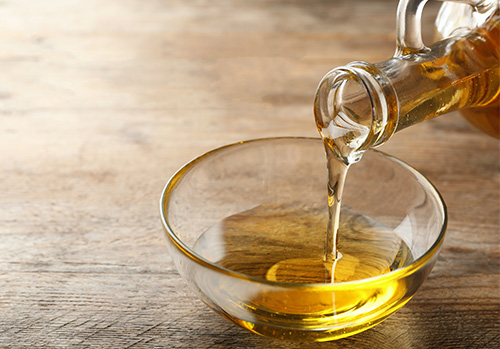Seed oils are everywhere.
You may have noticed that many foods we consume today have one of the following ingredients: soybean oil, cottonseed oil, vegetable oil, sesame oil, or sunflower oil. Seed oils have been slowly making their way into the food industry since the early 20th century when oil extraction machines were invented and marketed for industrial use.
A Brief History of Seed Oils
The popularization of seed oils began as a result of the marketing efforts of Procter & Gamble at the beginning of the 20th century. In 1907 the company built its laboratories, where scientists and researchers experimented with cottonseed oil for years. The original intention was to find a way to lower production costs in its candle and soap products. After years of experimentation, they created a creamy, pearly substance extracted from cottonseed oil, better known today as Crisco.
In 1910 Procter & Gamble signed the patent for creating this substance that gave life to the Crisco product. To introduce this new product to the market, the company elaborated a marketing campaign to popularize the idea that using seed oils in the food industry was a healthier alternative to animal fat. As part of this campaign, thousands of promotional samples were distributed to restaurants, supermarkets, nutritionists, and home economists so they could see the usefulness of Crisco.
What is the problem?
All oils are combinations of fatty acids. There are two types of fat: saturated and unsaturated. Saturated has no double bonds in its chemical composition meanwhile unsaturated has one or more bonds.
When one fat molecule has one double bond, it is called monosaturated. When it has more, it’s called polyunsaturated. The best-known polyunsaturated fatty acids are Omega-3 and Omega-6, found in many foods, like salmon, shrimp, and seed oils. A balanced consumption of these two fatty acids can benefit our health, but with the introduction of seed oils in the food industry, our levels of Omega-6 consumption have increased; meanwhile, the Omega-3 has decreased to alarming levels.
This disbalance or overconsumption of Omega-6 is directly related to the increase in overweight and obesity. Scientific studies reveal that the general Western diet is deficient in Omega-3 fatty acids and contains excessive amounts of Omega-6. This imbalance in our diet is directly related to the detriment of our long-term health and inflammation.
Have you ever thought about this? Maybe we take in more seed oils with our daily diet than we can imagine.
What can we do to reduce its consumption?
1. Read the Ingredients Label
The next time you go to the grocery store, pay attention to the ingredient label of the food you buy. By doing so, you will realize that many food products contain seed oils, even those labeled “healthy.”
2. Make your sauces and salad dressings
Be creative and create your sauces and salad dressings using beneficial products for your health. Instead of using seed oils, you can consider making your recipes with olive oil or avocado oil.
3. Do research on alternatives available when eating out
It can be challenging to run away from seed oils when trying to eat out, as seed oils have penetrated the restaurant industry. Research blogs or forums to consider what new alternatives exist for you.
Agents
We hope that this information on What Exactly are Seed Oils? is useful to you.
Empower Brokerage is dedicated to helping you make informed decisions about your health and finances. Whether it’s through webinar training, one-on-one calls, seminars, or marketing plans, we want you to be successful!
Give us a call at 888-539-1633 or leave a comment below if you have any questions.
Quick links:
Jessimar Lopez graduated from the University of Puerto Rico Río Piedras Campus with a bachelor’s degree in audiovisual communications and participated in a study abroad internship at the University of Málaga with the sponsorship of the Benjamin G. Gilman Scholarship. She joined the Empower Brokerage team in 2022 as a videographer and editor.





